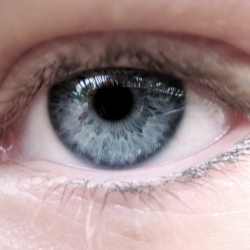
Night vision contact lenses may be the stuff of science fiction movies, but new research points the way to how we could some day see in the dark with our own eyes. Electrical Engineers at the University of Michigan have found a new way to sense infrared light using two layers of an atom-thick layer of carbon, known as graphene.
Unlike prior methods, the substance doesn’t have to be cooled to extremely low temperatures, and the device is very thin and small.
The researchers, Ted Norris and Zhaohui Zhong, faced a major hurdle with graphene: it just isn’t very sensitive to light. "It’s a hundred to a thousand times lower than what a commercial device would require," said Zhong in a statement. So instead of relying directly on the graphene’s sensitivity to light, the scientists decided to measure an electrical current running alongside the graphene layer.
Their findings, published last month in Nature Nanotechnology, explain that as light hits the top graphene layer, it leaves a measurable impact on the flow of electricity below it. That produces an electrical signal that can display a night vision image.
